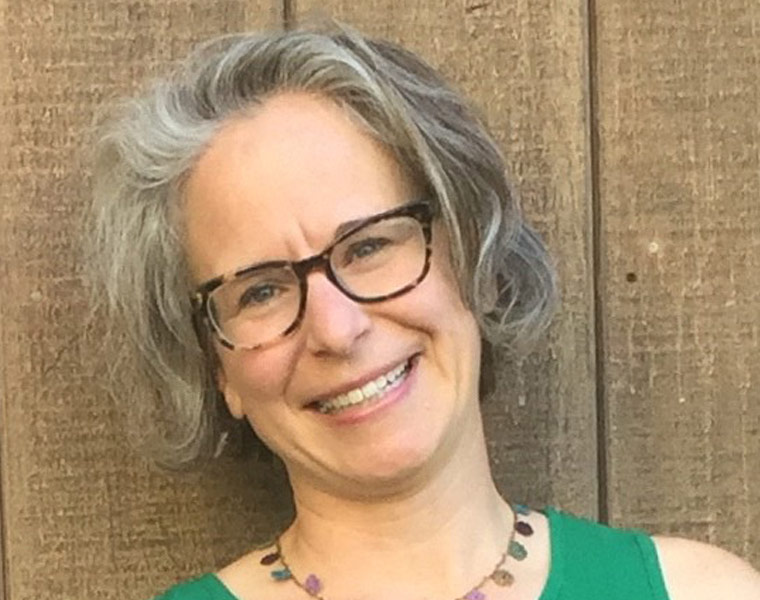
Cleveland is one of five communities to receive a combined $160 million from the U.S. Department of Housing and Urban Development to redevelop severely distressed housing and spur comprehensive revitalization under the federal Choice Neighborhoods Initiative (CNI).
More specifically, the Cuyahoga Metropolitan Housing Authority (CMHA) and City of Cleveland were awarded a $35 million CNI grant for the Buckeye-Woodhill neighborhood—a roughly one-square-mile area just south of Case Western Reserve University, between East 93rd Street, Buckeye Road, Martin Luther King Jr. Drive, East 116th Street and railroad tracks.
And Case Western Reserve played a critical role in helping to secure such an important investment, which was announced last week.
Debbie Wilber, assistant director and research associate of the National Initiative on Mixed-Income Communities (NIMC) at the Jack, Joseph and Morton Mandel School of Applied Social Sciences, “quarterbacked” the HUD grant application process.
The NIMC team coordinated with multiple stakeholders, including CMHA, the City of Cleveland, City Architecture, The Community Builders (the developer), key funders and a wide array of community partners, to ensure that a comprehensive and collaborative application, responsive to community needs, was submitted to HUD.
“It’s really a comprehensive plan, and to do all that, it’s a highly collaborative process,” Wilber said. “It’s such a critical investment for the Buckeye-Woodhill neighborhood, which has been disinvested in for decades.”
Through the CNI grant, Buckeye-Woodhill, CMHA, the city and its partners will create:
- 638 new, mixed-income rental units (plus 162 vouchers for units in other developments in the region);
- A new health clinic;
- An early childhood education center; and
- Retail space on a commercial corridor.
The grant also will allow for owner-occupied housing to be rehabilitated and vacant lots to be infilled. Residents also will be connected to employment, health, early learning and education opportunities.
Along with Cleveland, the grant winners, chosen from 20 applicants, were Camden, New Jersey; Detroit; Fort Myers, Florida; and Lewiston, Maine. For every $1 in Choice Neighborhoods funding, the awardees will leverage an additional $10.60 in public and private resources for their project proposals.
We asked Wilber about her involvement in the project on CWRU’s behalf and her passion for the work:
How long have you been at CWRU/the Mandel School and how did you get involved in NIMC?
I started working at Case Western Reserve on June 1, 2020, so it is almost exactly one year. I met our Center Director Mark Joseph (the Leona Bevis/Marguerite Haynam Associate Professor in Community Development at the Mandel School) in the spring of 2020; we met in person just days before the pandemic shutdown. There was an instant synergy between the needs of NIMC and what I was looking for professionally.
How did you get involved in this HUD project?
This was the first project I was assigned to. In fact, I had a meeting with some of our external partners on my first day. Mark (Joseph) was private-messaging me throughout the Zoom meeting, sending explanations and spelling out acronyms for me. It was a very steep learning curve, but made easier by a very talented and passionate team who supported me along the way.
Why do you think you were successful as the “quarterback?”
I have a civil engineering degree and worked in construction project management for the first five years of my career, so leading a team toward a clear finish line is something that comes fairly naturally and I love to do. More than anything else though, it’s a lot easier to quarterback when you have a stellar team. Everyone worked so hard, brought great ideas and collaborated in meaningful ways. My role was to ask a lot of questions, make sure we didn’t drop any balls and keep us to our deadlines so we could submit an application we would all be proud of.
Why is this type of work so meaningful to you?
I’ve been working in and around the housing space for most of my career. Housing matters. But more than that, community matters. Living someplace where you feel like you belong, where you know your neighbors, where you feel safe and seen and valued. At NIMC, we talk about the importance of social dynamics in a community, the need to shape inclusive, equitable neighborhoods where differences are affirmed and valued. Unfortunately, this rarely happens organically. I love thinking about and influencing how communities are designed, who designs them and how we can ensure that they are places where everyone can thrive.
Why is this Buckeye-Woodhill project, specifically, so meaningful to you?
Buckeye-Woodhill is a 10 minute-drive from where I live, and a world away. We can talk about the deficits: most of the units only have a bathtub and no shower; significant deferred maintenance; there’s no air-conditioning, and the heating isn’t reliable; there are three washers and three dryers on site for 487 units; street layout makes it isolated and leads to high crime; etc. However, the community has tremendous assets: It has a grocery store, is close to downtown and University Circle, has a rich cultural history and incredible people who live there. There are entrepreneurs, advocates, artists, parents and grandparents. They are calling for better housing, accessible and affordable child care, improved safety and access to public transportation, and third spaces where they can gather and connect. I am honored to partner with them to make that happen.
And for Case Western Reserve, it really aligns with our commitment to community engagement. This is a neighborhood that’s a stone’s throw from the university, so the university has really put a stick in the ground and said, ‘We are committed to this neighborhood and this project.’


